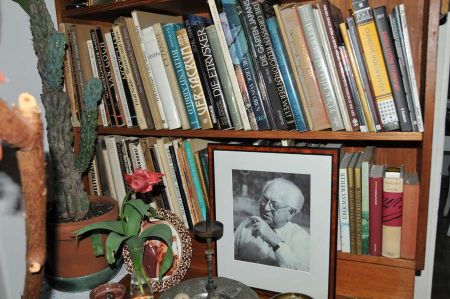From Kitzingen to Vienna for first contacts - Roman roads!
- Written by Portal Editor
After the handover of the caravan in Rain am Lech, it first went to Kitzingen, where various camping equipment was waiting to be accommodated in the future mobile home.
Thoughts about the amount of goods to be stored turned out to be wrong - there was plenty of storage space in the Fendt Saphir Scand. And we would still not reach the permitted maximum weight in trailer operation together with the towing vehicle. So far, almost all preparatory measures have been taken care of and the journey to the opening of the tour as part of the 60th anniversary of the Goethe Institute Izmir can begin.
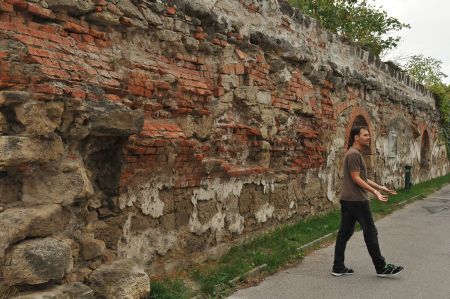 This time, our route should be via Regensburg, Vienna and Belgrade, as we had agreed to make a stopover in Vienna. Through internet research last year we found Dr. I met Robert Krickl, who had created an "alternative" Roman festival in Brunn am gebirge for the first time, which was primarily about imparting cultural knowledge through the traces left behind by the Romans in the area around Brunn. It has become a matter close to his heart to convey the fascination of our world simply and vividly as part of his science communication, from kindergarten to retiree groups. A goal that we have also set ourselves. It was therefore obvious to contact Dr. Krickl to discuss first thoughts of a common concept for 2015.
This time, our route should be via Regensburg, Vienna and Belgrade, as we had agreed to make a stopover in Vienna. Through internet research last year we found Dr. I met Robert Krickl, who had created an "alternative" Roman festival in Brunn am gebirge for the first time, which was primarily about imparting cultural knowledge through the traces left behind by the Romans in the area around Brunn. It has become a matter close to his heart to convey the fascination of our world simply and vividly as part of his science communication, from kindergarten to retiree groups. A goal that we have also set ourselves. It was therefore obvious to contact Dr. Krickl to discuss first thoughts of a common concept for 2015.
What was life like for the Romans in Brunn am Gebirge?
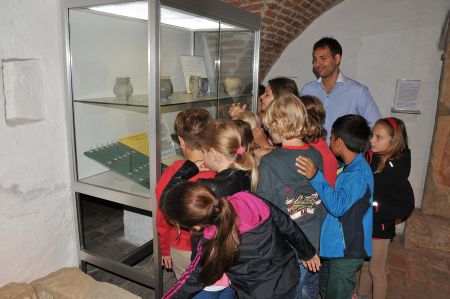 Dr. Robert Krickl: I studied earth sciences until I completed my doctorate, but thanks to my interdisciplinary training and my interests, I can offer you numerous competent courses in different specialist areas - including: mineralogy, crystallography, raw materials science, materials science, geology, petrology, chemistry, physics, paleontology , zoology, botany, archaeometry and history. An important focus of my work: What was here in Brunn 2000 years ago and what traces has the former presence of the Romans left in our modern everyday life? The "Roman Days", which we organized for the first time in 2013 in the Heimathaus Brunn am gebirge, revolved around these questions.
Dr. Robert Krickl: I studied earth sciences until I completed my doctorate, but thanks to my interdisciplinary training and my interests, I can offer you numerous competent courses in different specialist areas - including: mineralogy, crystallography, raw materials science, materials science, geology, petrology, chemistry, physics, paleontology , zoology, botany, archaeometry and history. An important focus of my work: What was here in Brunn 2000 years ago and what traces has the former presence of the Romans left in our modern everyday life? The "Roman Days", which we organized for the first time in 2013 in the Heimathaus Brunn am gebirge, revolved around these questions.
They started on Friday, September 13th. in the morning with a leadership and activity program for about 100 students, which was followed in the evening by a lecture on my latest research results on the Roman finds.
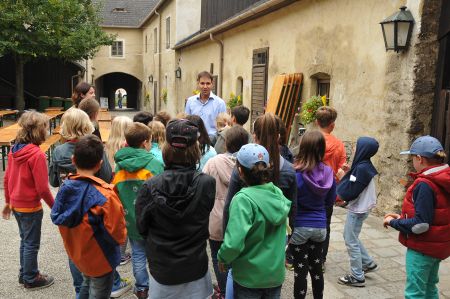 On Sat., 14.09. the actual Roman days were opened, which lasted until 15.09. offered numerous attractions: local gastronomic establishments were supplied with ancient recipes, which they reconstructed, reinterpreted or inspired new ideas. The result was not only interesting, but downright delicious! The dishes were in such high demand that the generously calculated portions were eaten up ahead of time and supplies had to be prepared. The drinks were so popular that there were many inquiries about selling them by the bottle.
On Sat., 14.09. the actual Roman days were opened, which lasted until 15.09. offered numerous attractions: local gastronomic establishments were supplied with ancient recipes, which they reconstructed, reinterpreted or inspired new ideas. The result was not only interesting, but downright delicious! The dishes were in such high demand that the generously calculated portions were eaten up ahead of time and supplies had to be prepared. The drinks were so popular that there were many inquiries about selling them by the bottle.
In the Sunday mass in the parish church Brunn/Geb. Latin songs were sung, prayers were prayed in Latin and a very interesting exhibition about Christians in ancient Rome was presented.
So much for the information about the first Roman festival in Brunn am Gebirge. We met on Sunday evening for an initial personal meeting and at the end of the meeting we had a firm agreement to work out a joint concept for 2015. We will keep you, dear readers, up to date.
Clemes Holzmeister - star architect in Turkey
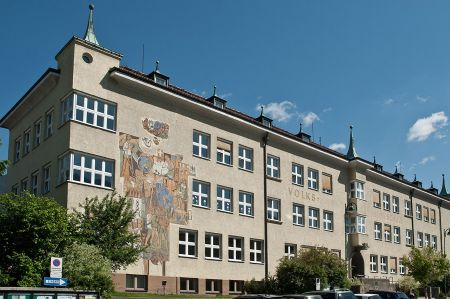 The second appointment in Vienna also concerned an "internet acquaintance" whose origins we researched in the first conversation but did not come to a definitive conclusion: Mrs. Barbara Mohapp-Holzmeister, the daughter of the architect Clemens Holzmeister, who is so highly regarded in Turkey. We first came across the name Clemens Holzmeisters while researching people who had to leave German-speaking countries during the Nazi era (see also the article on Ernst Reuter). Some time later we received a book from the Goethe Institute, which is extremely interesting from an architect's point of view, "The Development of a Capital", which contained further building projects by Clemens Holzmeister and other well-known architects and master builders who, for whatever reason, immigrated to Turkey.
The second appointment in Vienna also concerned an "internet acquaintance" whose origins we researched in the first conversation but did not come to a definitive conclusion: Mrs. Barbara Mohapp-Holzmeister, the daughter of the architect Clemens Holzmeister, who is so highly regarded in Turkey. We first came across the name Clemens Holzmeisters while researching people who had to leave German-speaking countries during the Nazi era (see also the article on Ernst Reuter). Some time later we received a book from the Goethe Institute, which is extremely interesting from an architect's point of view, "The Development of a Capital", which contained further building projects by Clemens Holzmeister and other well-known architects and master builders who, for whatever reason, immigrated to Turkey.
In any case, we had lively email contact with Ms. Mohapp, from which the family relationship to Clemens Holzmeister emerged, so that we wanted to use the stay in Vienna to visit her. Further research revealed that on November 24, 2011, as the conclusion of numerous events dedicated to the Austrian architect Clemens Holzmeister, a Holzmeister commemorative corner was unveiled in the park of the "Great Turkish National Assembly", which Holzmeister had built between 1939 and 1961 as his main work in Turkey had been. The ceremony to unveil this memorial took place in connection with the stay of the "Austrian-Turkish Parliamentary Friendship Group" in Turkey; the opening speeches were held by the chairman of the friendship group, Federal Councilor Georg Keuschnig, and the deputy speaker of the parliament, Mehmet Saglam.
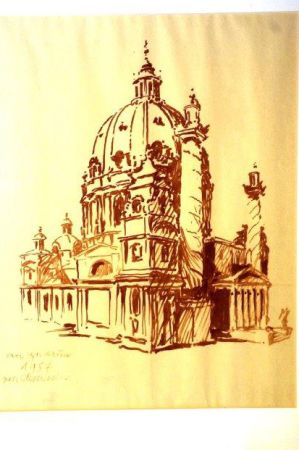 A few days earlier, a Holzmeisterpark with a bust of Holzmeister had been opened in the Oran district of Ankara by the mayor of the associated municipality of Cankaya, Bülent Tanik, and the Austrian Ambassador Heidemaria Gürer in the presence of Barbara Mohapps. This opening took place as part of a Holzmeister symposium and exhibition of his watercolors in the "Cer Modern"- Museum in Ankara.
A few days earlier, a Holzmeisterpark with a bust of Holzmeister had been opened in the Oran district of Ankara by the mayor of the associated municipality of Cankaya, Bülent Tanik, and the Austrian Ambassador Heidemaria Gürer in the presence of Barbara Mohapps. This opening took place as part of a Holzmeister symposium and exhibition of his watercolors in the "Cer Modern"- Museum in Ankara.
In addition to the Holzmeisterpark and the memorial in the Turkish Parliament, a Holzmeisterstraße was opened in 2008 by the then Vienna City Councilor Rudolf Schicker in the Yildiz district of Ankara and a commemorative plaque was attached to his former home, as well as a “Holzmeisterführer durch Ankara” designed by the Austrian Embassy in Ankara ' presented to the audience.
Clemens Holzmeister, who lived constantly in Turkey from 1938 to 1953, mainly in Ankara in addition to his teaching activities in Istanbul, can be described as "Turkey's state architect", since he had already been to Atatürk for the construction of the new capital Ankara Turkey invited. In addition to the parliament, his 15 buildings in Ankara include such important ones as the presidential palace, some banks and the most important buildings in the ministry district as well as the Austrian embassy. Together with the Austrian sculptor Anton Hanak, he also erected the "security monument" in the government district.
In addition to all these really interesting connections, Ms. Mohapp had suggested a guided tour of the city and it is clear that there is hardly anything better to get to know a city for the first time than to explore the city with a citizen.
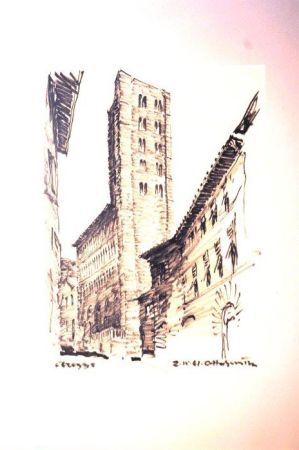 So we met on Saturday noon for a first cup of coffee. Mrs. Mohapp's son was also present because he wanted to do the planned city tour with us. We quickly became immersed in intensive discussions, as there were many common interests to be discussed, so that time flew by. We almost forgot the planned city tour. Luckily there was still free time tomorrow, Sunday, so we decided to "only" visit Schönbrunn Palace, which is only a few hundred meters away from the Mohapps' house. The glorious weather did its utmost to help. We were supposed to be back at 6.00 a.m. for a prepared and, as it turned out, excellent roast lamb, during which there were further discussions.
So we met on Saturday noon for a first cup of coffee. Mrs. Mohapp's son was also present because he wanted to do the planned city tour with us. We quickly became immersed in intensive discussions, as there were many common interests to be discussed, so that time flew by. We almost forgot the planned city tour. Luckily there was still free time tomorrow, Sunday, so we decided to "only" visit Schönbrunn Palace, which is only a few hundred meters away from the Mohapps' house. The glorious weather did its utmost to help. We were supposed to be back at 6.00 a.m. for a prepared and, as it turned out, excellent roast lamb, during which there were further discussions.
For Sunday we had arranged a city tour, which really led to many corners of Vienna, which also reached beyond the main stream of tourists. A report on this will follow later. We also got to know some of the well-known specialties of the city, which definitely make us want to come back, just mention the Sacher cake or the excellent ice cream. In short, a great experience that only ended after 6 hours due to exhaustion.
A final conversation with Ms. Mohapp in the evening then led to the promise of maintaining contacts as well as visiting our planned meeting and cultural festival in Regensburg in October of this year. We will be very happy to come back to Vienna.
Please read as well:
